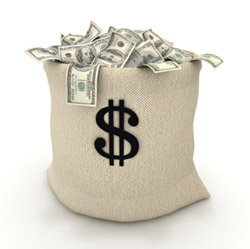Currency Trading, Risks and Strategies
Currencies are traded on the forex or foreign exchange market. The daily volume of transactions amounts to $2 – $3 trillion, making it the largest market in the world. It was only a few years ago when online trading became popular. Before forex trading was reserved for hedge funds, international corporations, and big banks. The fastest growing segment is, in fact, the retail segment. The reason is that online programs and software make it easier to enter the foreign exchange market and trade. Another reason is the volatility of the stock market.
Investors trade currency pairs such as USD / JPY, GBP / USD, EUR / USD, and AUD / USD. These are the most traded currency pairs, and they make about 85 percent of the volume traded on the forex market. The USD dollar/ yen and Euro / US dollar are the most popular. If an investor buys US dollars, he/she buys US dollars and sells British pounds at the same time. The most common way to quote is with an ask and bid price. The ask price is higher than the bid, which is what brokers are ready to buy.
Factors in Trading
Factors such as geopolitical situation, industrial growth and production, and inflation are responsible for exchange rate fluctuations. While some investors make millions of dollars from the movement of currencies, others lose a lot of money. Trading involves risk, especially for inexperienced investors. In fact, only 1/3 of all trades on the foreign exchange markets turn out profitable. The market is still dominated by large banks and corporations while individual traders lack experience, knowledge, and money to deal on equal terms.

Experts recommend that individual traders opt for a diversified investment portfolio whereby forex trading is just several percentage points. Over-trading is one mistake that inexperienced investors make. They trade a large position compared to their account size. According to experts, traders should put up to 5 – 10 percent of their balance toward a single transaction. Newbie traders end up losing a lot of money because they don’t have a working strategy for a high-risk environment. The most important factors are luck and good timing. But if luck is not on your side, it is best to set limits to be on the safe side. You can minimize your losses by setting up a stop-loss order which helps traders to specify their loss limits. If you have $10,000 in your account and don’t want to lose more than $2,000, you can place a stop-loss order.
Using Trading Software
Note that some forex programs advertise huge profits, but you can incur more losses in the long run. There are different automated-trading programs such as Forex Combo System, Kangaroo EA, and IrisFx, among others. The key to successful forex trading is to use strategies that work for specific market conditions. Trading different currencies instead of focusing on one currency pair decreases the risk of losses.
People who trade options, futures, and stocks usually use the services of a broker. The investor pays a commission to the broker for executing the transaction. In contrast, there are no commissions on the foreign exchange market. Dealers are the ones to assume risk.
Individual investors trade to make profits. The goal of the forex market, however, is to facilitate currency exchange for institutions, corporations, and businesses that trade currencies for merger and acquisition activities, payment for services and goods, payroll, etc. Thus, forex assists and facilitates investment and international trade through currency conversion. It allows companies in Switzerland to buy goods from Japan and pay in yens, although their income is in Swiss francs.
Speculation
About 4/5 of the transactions that take place on forex are speculative. The key players are individual traders, big hedge funds, and large financial establishments. Some currencies are more popular among speculative traders. These include the US dollar, British pound, New Zealand dollar, Canadian dollar, Swiss franc, and Japanese yen. These currencies are traded in different combinations.
The main participants on the foreign exchange market are commercial companies, foreign exchange traders, investment management firms, non-bank entities, and hedge funds. Non-bank companies don’t engage in speculative trading but provide international payments and currency exchange services to businesses and individual customers.
Related Articles
Hedge Funds Focus on High Returns and Aggressive Growth
A hedge fund is a pool of investments that are part of an aggressively managed portfolio. In general, hedging refers to strategies that are designed to leverage risk. What Funds DoThey trade undervalued bonds, trade options, and stocks, use arbitrage, take short and long positions, and invest in...
Rollover Options to Invest and Grow Your Savings
A rollover occurs when an investor uses the proceeds from one security to buy a similar or the same security. It also occurs when a person transfers securities from a retirement plan. The balance of an individual retirement account or 401k is transferred to another IRA or 401k. Thirdly, it...
How Pips Are Used in Currency Trading
A pip refers to percentage in point and is used in forex trading. It is the smallest change in value or move in a given currency. Most currency pairs (USD/CAD, USD/EUR) are priced to the 4th decimal. If a currency pair like GBP/USD trades at 1.5731, then the price ratio increases by 31 pips. One...
